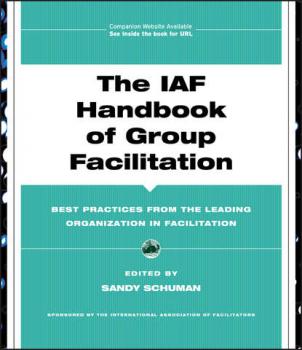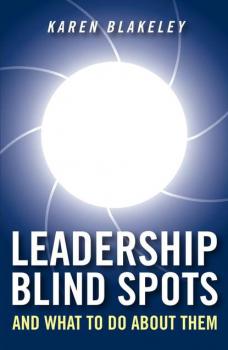Управление, подбор персонала
Различные книги в жанре Управление, подбор персоналаThe IT Manager's Survival Guide
Accessible, refreshingly candid, but above all helpful, this pragmatic guide addresses a real need by dealing with the problems that face the new IT manager. By providing a number of practical recommendations and approaches including how to make the transition from technical professional to manager and dealing with people, to giving advice and guidance on organization structure, architecture and planning approaches, this book covers a whole raft of issues essential to managing an IT unit. If you have chosen to move from the safe haven of technology to the unpredictable world of management, this book could make the difference between success and failure. «The IT Manager's Survival Guide is well named. Aimed at the techie becoming an IT Manager it covers the many alligators of IT management – from legacy systems to managing vendors – in easy chunks with checklists. It also provides the new manager with help to get ahead of the game by including articles from experts on what is wrong with IT management and a set of short reviews of management theorists from Strassman to Mayo. I recommend this book for those who would like to buck the trend – the average tenure of an IT Manager is about 900 days – and run an IT outfit appreciated by customers and staff.» Gill Ringland, Fellow of the British Computer Society and Member of the BCS Management Forum. Author of Scenario Planning: Managing for the Future.
Managing in the Modular Age
This book brings together seminal articles by leading scholars of technological and organizational systems, exploring the impact of 'modularity'. Modularity refers to an ability to take apart and put together differenct products and networks, or to 'mix and match' components in order to meet different user specifications. This is of key importance today where new systems such as the World Wide Web and many areas of the computer industry depend on it. The volume pulls together and defines an exciting new area of inquiry: into how our 'modular age' is reshaping the business eco-system. Includes contributions from leading scholars of technology and organization Modularity refers to an ability to take apart and put together different products and systems, or to 'mix and match' components in order to meet different user specifications. Consolidates and defines an area of inquiry that is becoming increasingly important with the development of web-based and 'network' industries. Sensitizes readers to the complexity of issues surrounding new modular products and systems created by e-business Encourages readers to make connections among different levels and disciplines. Initiates a debate around issues of modularity. Includes a commentary co-authored by the late Nobel Laureate Herbert A. Simon to whom the book is dedicated.
Controlling the Costs of Conflict
Written for non-experts in jargon-free language, this work shows how to create systems within organizations that preempt the monetary, strategic, and emotional costs associated with on-the-job conflict. Its clear and simple approach translates advanced concepts into practical how-tos and provides readers with four guiding principles they can follow to create conflict control systems of their own. Amply illustrated with real-world examples, it details the policies, procedures, and practices that make for successful control systems and tells precisely how to implement them.
Creating a Culture of Collaboration
Collaboration is often viewed as a one-time or project-oriented activity. An increasing challenge is to help organizations incorporate collaborative values and practices in their everyday ways of working. In Creating a Culture of Collaboration, an international group of practitioners and researchers–from Australia, Belgium, Canada, Chile, New Zealand, Northern Ireland, United Kingdom, and the United States–provide proven approaches to creating a culture of collaboration within and among groups, organizations, communities, and societies.
Handbook of Human Performance Technology
The first two editions of the Handbook of Human Performance Technology helped define the rapidly growing and vibrant field of human performance technology – a systematic approach to improving individual and organizational performance. Exhaustively researched, this comprehensive sourcebook not only updates key foundational chapters on organizational change, evaluation, instructional design, and motivation, but it also features breakthrough chapters on «performance technology in action» and addresses many new topics in the field, such as certification, Six Sigma, and communities of practice. Boasting fifty-five new chapters, contributors to this new edition comprise a veritable «who's who» in the field of performance improvement, including Geary Rummler, Roger Kaufman, Ruth Clark, Allison Rossett, Margo Murray, Judith Hale, Dana and James Robinson, and many others. Praise for the third edition of the Handbook of Human Performance Technology «If you are in the business of trying to improve organizational performance, this Handbook should be the first place you look for answers to questions about human performance technology.» – Joseph J. Durzo, CPT, Ph.D., senior vice president and chief learning officer, Archstone-Smith «This newest edition of the Handbook provides an unparalleled, all-encompassing survey of the latest theory and its practical application in this emergent field. This book is a must-have reference for any professional wishing to systematically improve performance within their organization.» – Weston McMillan, CPT, manager, training and development, eBay Inc. «An invaluable, engaging resource for anyone charged with improving workplace performance. It not only provides the background and foundations of our profession, but more importantly, it also provides the most up-to-date descriptions of how to apply HPT to drive results.» – Rodger Stotz, CPT, vice president and managing consultant, Maritz Inc. «This book is filled with insights–both for those who are new to the field and also for those who are experienced. It offers concrete advice and examples on how to use HPT to impact business results and how to work successfully within organizations.» – Anne Marie Laures, CPT, director, learning services, Walgreen Co. «The Handbook contains many of the secrets for improving the performance of individuals, groups, and organizations.» – Robert F. Mager, author, Analyzing Performance Problems and How to Turn Learners On…Without Turning Them Off
The IAF Handbook of Group Facilitation
Sponsored by the International Association of Facilitators, The IAF Handbook of Group Facilitation offers the need-to-know basics in the field brought together by fifty leading practitioners and scholars. This indispensable resource includes successful strategies and methods, foundations, and resources for anyone who works with groups. The IAF Handbook of Group Facilitation provides an overview of the field for new and aspiring practitioners and a reliable reference for experienced group facilitators, including chapters on Creating positive ongoing client relationships Building trust and improving communications Facilitating group brainstorming sessions Drawing out the best in people Developing a collaborative environment Designing and facilitating dialogue Managing conflicting agendas Working with multicultural groups Using improvisation Understanding virtual meetings Facilitating team start-up Assessing group decision processes Building expertise in facilitation Reviewing core facilitation competencies Modeling positive professional attitudes
The Philosophy and Practice of Coaching
The Philosophy and Practice of Coaching will help to advance the global conversation about the future of coaching. The book is organized into three key sections: Foundations for Coaching, Applications of Coaching, and Organizations and Coaching, and the focus is on enabling the reader to astutely link theory and practice.
Managing Complexity in Global Organizations
This book delivers new IMD insights on an emerging challenge – how to deal with overwhelming complexity. Global organizations face a complex decision-making environment. On one side, diversity of cultures, customers, competitors and regulations creates complexity; on the other, competitive pressures cause expanding countries to extract more synergies across products and regions. In such a climate, a new way of thinking, acting and organizing is needed beyond the familiar ‘control’ mindset. Drawing together insights from across the expert faculty, Managing Complexity in the Global Organization presents IMD’s framework on how to understand complexity and its four key drivers (diversity; interdependence; ambiguity and flux), along with solutions on specific issues in a variety of functions, industries and markets. The focus is on providing practical solutions based on real-life examples.
Leadership Blind Spots and What To Do About Them
Knowledge is built from personal experience and coloured by our needs and values. It follows that all knowledge is personal and incomplete. We all suffer from ‘blind spots’. But when leaders have them, it matters. To guide people on a journey of continuous learning, understanding and adapting to events as they occur, leaders must overcome their own blind spots and those of their organization. Any leader who implements the practices outlined in this book will immediately improve their ability to perform in today’s competitive global environment. Karen Blakeley provides in-depth analysis of how leaders learn on the job – and what gets in the way. Most importantly she offers a systematic approach for accelerating leaders’ learning capacity – and maximising their performance potential.
The Ethics Challenge in Public Service
Since it was first published in 1991, The Ethics Challenge in Public Service has become a classic text used by public managers and in public management programs across the country. This second edition is filled with practical tools and techniques for making ethical choices in the ambiguous, pressured world of public service. It explores the day-to-day ethical dilemmas managers face in their work, including what to do when rules recommend one action and compassion another, and whether it is ethical to dissent from agency policy. This essential text explores managers' accountability to different stakeholders and how to balance the often competing responsibilities.









